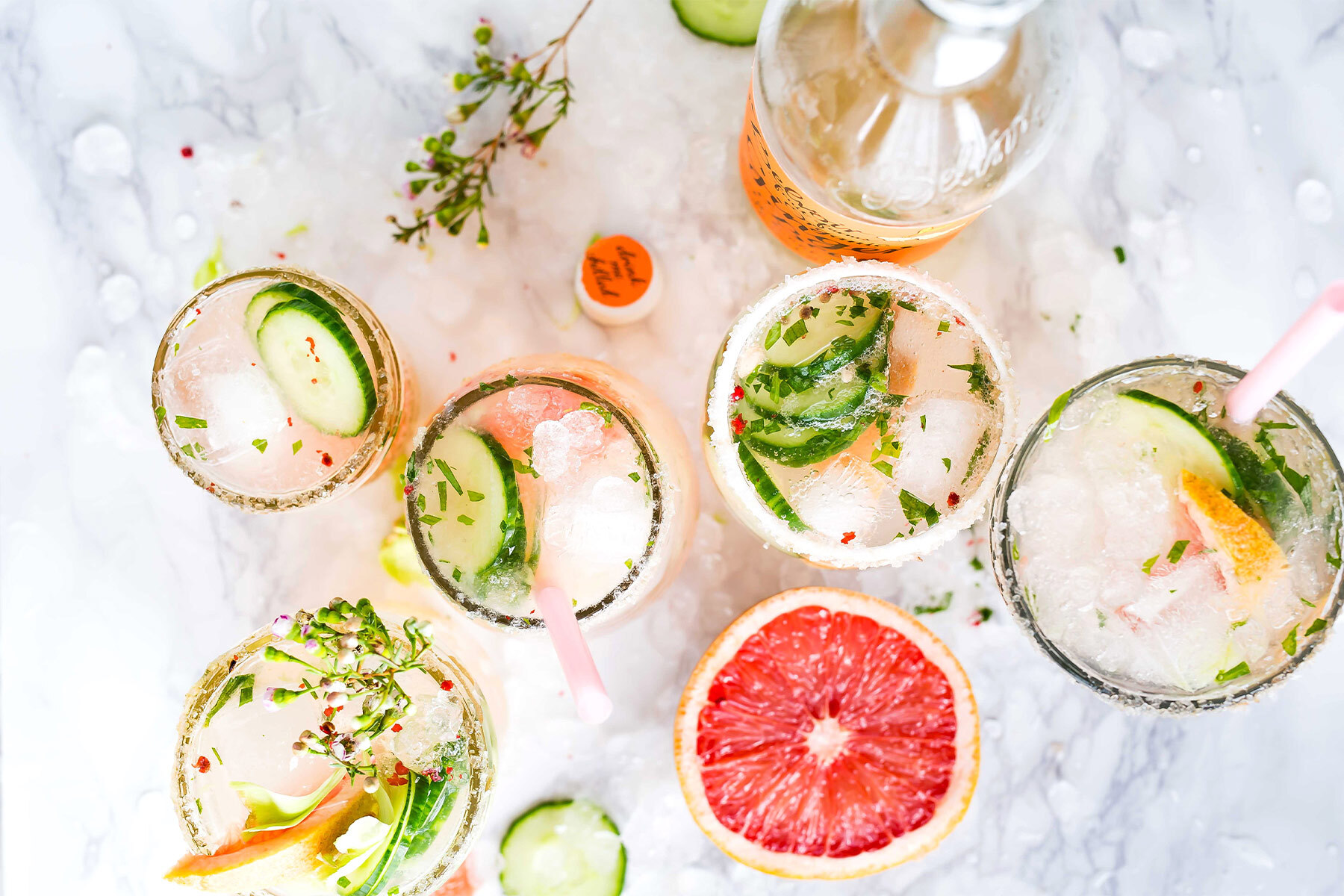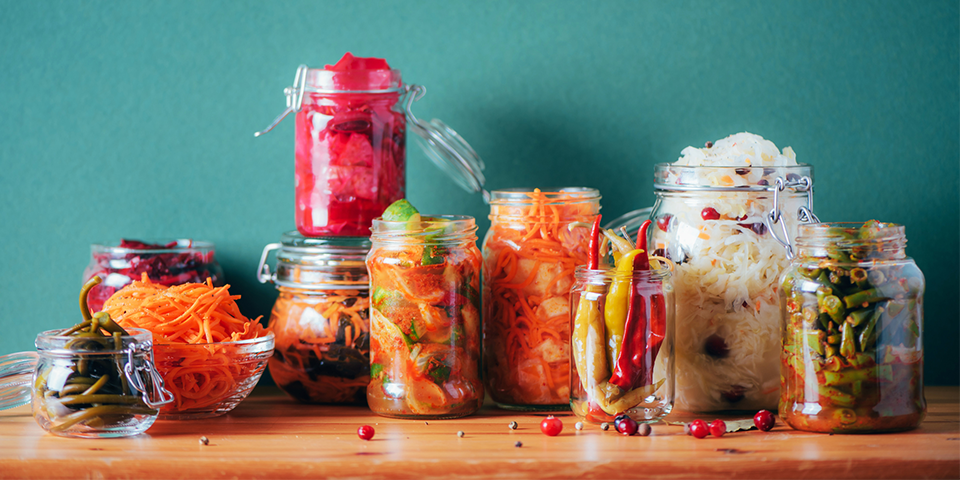When you know how to grill vegetables the right way, they can be a healthy and tasty part of a balanced diet — and, dare we say, just as crave-worthy as a juicy burger or shrimp skewer.
Why grill your veggies?
Not only does it help mix up your vegetable cooking methods, but vegetables cooked on the grill take on new flavor dimensions that can’t be achieved through boiling, steaming, or baking, explains Carrie Gabriel, M.S., R.D.N.
“Grilling vegetables allows their natural sugars to become caramelized, creating a sweet, smoky finish,” Gabriel says.
Before you fire up the grill, here are our top tips for making veggies part of your barbecue repertoire.
1. Choose the Best Vegetables for Grilling
Vegetables are not all equal when it comes to grill-ability, so be sure to choose veggies that are hearty enough to stand up to the flame and the flipping, Gabriel says.
“Some of the best vegetables for grilling are bell peppers, eggplant, zucchini, onions, and yellow squash,” she adds.
Delicate vegetables like tomatoes, mushrooms, and scallions can handle the heat but may require special tools or techniques to get the best results.
2. Get the Right Grilling Tools
Want to ensure your veggies actually make it to your table — not the bottom of your barbecue?
Invest in a set of metal skewers to keep smaller veggies like bell pepper chunks and mushrooms from falling through the grates.
Metal skewers are flame-proof, and because they’re reusable, they’re better for the earth.
If you only have wood skewers available, soak them for at least 30 minutes before putting them on the grill to avoid igniting.
Another option: pick up a grill basket, suggests Lisa Richards, CNC, a nutritionist and the creator of the Candida Diet.
Baskets help to free up some grill space and make it easy to cook veggies like carrots, asparagus, and chopped potatoes easily and evenly (without having to flip each individual chunk).
3. Utilize Cooking Zones
Whether your grill is gas or charcoal, remember that you can adjust the flame to create different cooking zones — so your bell peppers get blistered in one area while your sweet potatoes slow-cook in another.
Use the burners on a gas grill to create different temperature zones, or move coals around the base of a charcoal grill to create char spots and lower-heat cooking zones.
4. Go Beyond the Basics
“Get creative!” says Holly McKee-Clark, culinary specialist for Beachbody. “I haven’t met a veggie I couldn’t grill — including lettuce!”
Don’t be afraid to experiment with different cooking methods.
If you always make veggie kebabs, for example, try grilling whole veggies like bell peppers or corn on the cob instead.
Or grill foil packets with wrapped-up sliced potatoes, herbs, and olive oil. The next grilled vegetable recipe you try could be your favorite!
5. Grill Your Salad
Amp up your salad’s complexity by throwing sturdy greens like romaine hearts, bok choy, or iceberg wedges onto the grill for a brief charring, McKee-Clark suggests.
Be sure to lightly oil your greens and eat immediately after grilling to avoid them going limp. Just avoid any greens with tender leaves, as they tend to wilt or burn on the grill.
6. Pay Attention to Cook Times
Just like indoor cooking, grilling times will vary based on the vegetable density and cut size.
Sturdier vegetables like cauliflower and onions will take longer to cook than tender mushrooms and tomatoes. Denser vegetables like potatoes or corn often do best when wrapped in foil before going on the grill to allow them to steam.
Check out the recommended grilling times from The Barbecue Bible to know how long to keep your portobellos or parsnips on the heat.
7. Season and Marinate After Grilling
Grilling adds smoky flavor, but you can make your veggies even tastier with a seasoning or marinade — anything from a simple sprinkle of sea salt or fresh herbs to a healthy vinaigrette.
Unlike meats and seafood, however, vegetables are best seasoned after you remove them from heat.
“Marinating vegetables after grilling them will allow them to absorb more flavor when they are hot,” Gabriel says.
8. Rethink Your Kebab Strategy
Mixed kebabs can be a colorful, Instagram-worthy meal, but what are the chances that your chicken chunks will cook at the same speed as your zucchini slices? Not likely.
Instead, consider keeping each kebab consistent — chicken on one skewer, onions and peppers on another, and so on — to ensure your veggies don’t burn while you’re waiting for meat to cook through.
9. Let Veggies Rule the Grill
Don’t relegate veggies to a tiny corner of the grill.
“Approach your grill with the 2B Mindset’s ‘Plate It!’ system in mind,” McKee-Clark says.
“If you’re making lunch, 25% of the grill space should be for protein, 25% for FFCs (fiber-filled carbohydrates), and 50% for veggies,” McKee-Clark adds. “For dinner, aim for 25% protein and 75% veggies.”
If you’re following a portion control plan like Portion Fix, McKee-Clark suggests letting the Portion Food List inspire your BBQ picks.
Choose a veggie from the list with a whole measure — like 10 spears of asparagus, half a medium eggplant, or one medium turnip, McKee-Clark says.
For smaller veggies, like chopped broccoli or snow peas, measure out your portions first, then use a grill basket.
10. Use Your Grill for Meal Prep
After you’re done cooking dinner, consider loading up the grill with a batch of veggies for meal prep throughout the week.
“Once you’ve gone to the trouble of getting the grill going, take full advantage!” McKee-Clark says. “Throw some extra veggies on and close the cover while you’re eating your meal.”
You’ll have a healthy collection of grilled vegetables to mix into scrambled eggs, top salads, or adorn grain bowls throughout the week.
11. Grill for Healthy Swaps
Looking for ways to get more vegetables into your daily diet?
McKee-Clark suggests these fun and fast ways to use your grill for extra-credit veggies:
- Grill portobello mushroom caps instead of hamburger buns.
- Slice turnips and place them in a tin foil packet with a little oil, garlic, and salt, then grill those instead of a typical potato side.
- Slice a bell pepper in half, crack an egg inside, and grill breakfast.
12. Grill Without the Grill
Don’t have an outdoor grill? You can still enjoy the flavor and versatility of grilled vegetables with a stove-top solution.
“I personally live in an apartment and don’t have an actual grill, but I do own a reversible grill pan,” Gabriel says.
While you won’t have an actual flame to work with, a cast-iron grill pan can work as a barbecue dupe to get you a bit of that grilled flavor, a hint of char, and — of course — those coveted grill marks!
Want more expert nutrition tips and advice? Head over to BODNutrition.com to learn how Beachbody nutrition programs and products can help you lead a healthier lifestyle.







